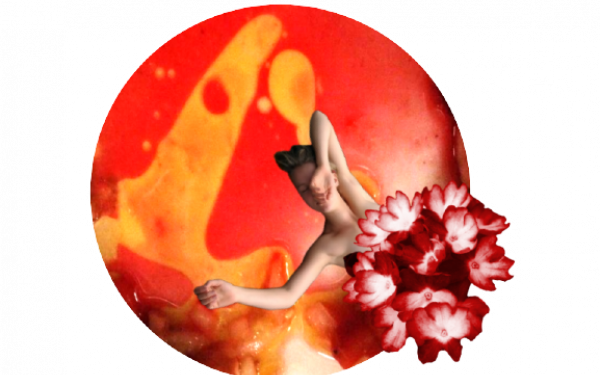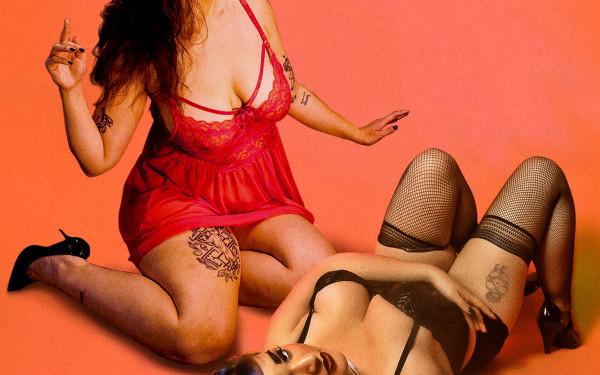Anyone can be a ballet dancer
Ballet Hop’s inclusivity is reshaping preconceptions about the essence of ballet
As Gwenda Wells approaches retirement, she has finally found the missing part of her week at Ballet Hop, a new ballet studio in Notre-Dame-de-Grâce. After quitting ballet as a child because of its strictness and regimented nature, her love for the dance was replenished.
Wells saw Ballet Hop come together last summer, before it officially opened in September 2024. The name of the studio and its colourful interior, its walls plastered with bubbly circles and flowers, caught her attention.
She called the owner of the NDG branch, Kate Doucet, and was enthusiastically greeted with Doucet’s British accent. One of Ballet Hop NDG’s earliest customers, Wells left her first class “really pleased” with herself.
“This is not just stepping into another workout class. You've just embarked on something that will be a game changer for your life,” Wells said. “I felt like there were going to be a lot of challenges.”
Wells’s favourite class at Ballet Hop is chair ballet.
“It’s fantastic upper body work and it’s helping me be much more technical in the exact position of my hands, elbows, shoulders and spine,” she said. “I like the fact that I can feel the difference in my body.”
Wells has gained many friends since joining Ballet Hop. The group has monthly themed parties where they learn a new choreography, either with a partner or lined up individually on the bar.
“You're going to really enjoy the other people you’re doing [ballet] with,” Wells said. “It’s very focused on what you’re doing, but it’s also very social.”
The studio lifts the restraints of traditional ballet, such as the overemphasis on technique and the depreciation of artistic expression. Their regulars say the studio has introduced an innovative side to ballet that enabled its resurgence in popularity among adults.
Wells is fond of the joyful and inclusive atmosphere at Ballet Hop.
“I felt seen and heard,” she explained animatedly. “I felt that Kate wanted to know who I was as a person walking into that class. She wants to know what you need and how this place can help you to fulfill that. You feel like you've just done something really positive for yourself and it stays with you all day.”
Wells feels Ballet Hop is a space that can accommodate almost anybody.
“I would recommend it to people who just want to get fit or stay fit,” she added. “I would recommend it to people who love to move to music. I would recommend it to guys; students, too. There is a lot more to ballet than you think.”
Doucet grew up in the U.K. She was enrolled in the Northern Academy of Performing Arts in Hull, England, where she received her teaching qualifications with the Imperial Society of Teachers of Dancing examination boards. She later left the U.K. to work on cruise ships, where she danced and sang.
Doucet initially wanted to become a teacher at Ballet Hop. However, she found a franchise opportunity on their website and decided to look more into it. She eventually called the founder of Ballet Hop, Camille Rouleau, to further explore the franchise idea.
“We just clicked,” Doucet said. “It just seemed like a natural relationship, which in business, of course, is very important to have. We spoke and spoke some more, and it just seemed like the right decision to move ahead with it.”
Doucet was charmed by the fact that Ballet Hop opens its doors to everyone.
“I've worked for ballet schools who are more professional, and that's wonderful,” Doucet said. “However, there's a big, massive population who just want to dance for fun, and there's a massive population who used to dance and they got scared of dancing because of the strictness of ballet.”
Doucet cherishes the freedom of Ballet Hop because it allows anyone, regardless of age, to start ballet and enjoy it. The studio welcomes students between the ages of 17 and 70, and despite the age gaps between clients, teachers rarely separate them.
“We have an older client who comes in and she is way more flexible than myself,” Doucet said. “We have a lady come in and she runs every single day, and I don't run every day. So, age doesn't necessarily matter. It's how fit, how healthy, how much they move in general.”
Doucet believes that the studio is fighting stereotypes against ballet, particularly those surrounding its physical aspect. To her, ballet is primarily a sport.
“It's not just about putting on a tutu and bouncing around,” she said. “You have to know your endurance. You have to have stamina. You have to understand your body from the inside out. Most people leave class and they say, ‘I felt graceful for the first time,’ or, ‘I felt really light and I felt really happy.’”
Sabrika Leduc, a teacher at Ballet Hop, said she carried stigmatized views on ballet for years before getting into it. Originally a ballroom and hip hop dancer, Leduc did not feel she had the suitable figure for a ballerina. However, she considers herself lucky to have had teachers who helped her appreciate how ballet can look and feel with her body.
“As you’re getting into it, you get used to the movement and musicality of it,” Leduc said. “You link the music to a feeling and dig more into that.”
Leduc mostly teaches technical classes, where she focuses on enabling the connection between the mind and body. The aim is to help students use the right muscles, feel good while using them and enhance their technique and strength.
“I like to keep the rigour of ballet but remove the rigidity of it so that people can have fun and explore their inner ballerina,” Leduc said. “I want people to understand that ballet is a way of being artistic. It’s tuning with your body and playing with your imagination.”
Besides the freedom of choosing the music and her clientele’s passion, Leduc’s favourite thing about teaching ballet is being able to express her own voice. She acknowledges and incorporates non-standard ballet techniques that can be just as rigorous, useful and interesting to learn. She adds mobility exercises that help clients with different abilities improve their movements.
“We need to take the time to cater the dance to the body instead of catering the body to the dance,” Leduc said.
Doucet hopes the studio will remain active for a long time, wanting to continue growing the community she has built in just six months.
“It’s been an absolute dream,” Doucet said with tears in her eyes. “I just hope we keep going and make sure that everybody knows that it's here, that people who may feel like it was never accessible to them before now have a place to come and feel welcome.”


_600_832_s.png)




